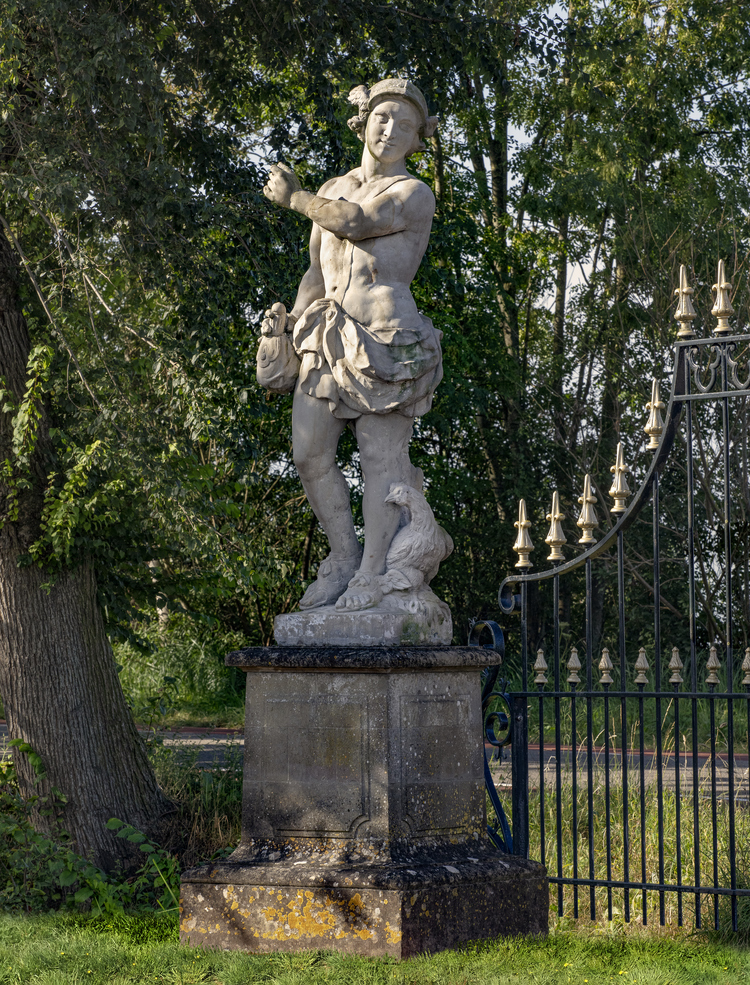CIRCLE OF IGNATIUS VAN LOGTEREN (DUTCH 1685-1732) AND AFTER MICHEL ANGUIER (FRENCH 1612- 1686), A CONTINENTAL SCULPTED LIMESTONE GROUP OF MERCURY AND COCKEREL, 18TH CENTURY
The god portrayed standing and ‘heroically nude’ but for drapery around his midriff, the petasus helmet worn back on his head, the cockerel beside him on the rectangular section base.
194 cm. high, 46 cm. wide, 42 cm. deep. Atop a limestone square section plinth, of spreading form, 105 cm. high, 90 cm. square, 299 cm. high overall.
Mercury, usually recognisable by his petasus, caduceus and winged sandals was, other than his chief role as messenger of the gods, also associated with trade and commerce. He was also the patron god of financial gain, eloquence (and thus poetry), messages/ communication (including divination), travellers, boundaries, luck, trickery and thieves as well as being the guide of souls to Hades. In this group his association with a cockerel marks him as the Herald of the New Day, and he was similarly portrayed by the Flemish sculptor Artus Quellinus, and by the Dutch artist Hendrik Goltzius in a work of 1611.

